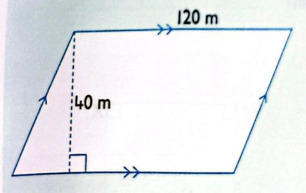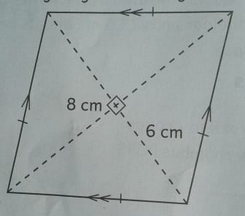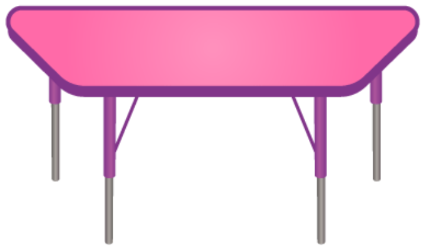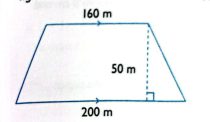\begin{align*}
\text{Area of the rectangle}=\amp l \times w \\
=\amp 20cm \times 14cm \\
=\amp280 cm^2
\end{align*}
\begin{align*}
\text{Area of the triangle}=\amp \frac{1}{2} bh \\
=\amp \frac{1}{2} \times 18cm \times 14cm \\
= \amp 126cm^2
\end{align*}
\begin{align*}
\text{Area of the semicircle}=\amp \frac{1}{2} \pi r^2 \\
=\amp \frac{1}{2} \frac{22}{7} \times 7cm \times 7cm\\
=\amp77cm^2
\end{align*}
\begin{align*}
\text{Area of the combined shapes}=\amp \text{area of all the three figures calculated} \\
=\amp 280cm^2 +126cm^2+77cm^2 \\
=\amp 483cm^2
\end{align*}
\(Alternatively:\) add up the area of the trapezium and the semicircle.
\begin{align*}
\text{Area of the trapezium}=\amp \frac{1}{2} h(a+b) \\
=\amp \frac{1}{2} \times 14(20+18+20) \\
= \amp 7cm \times 58cm \\
= \amp406cm^2
\end{align*}
Area of the semi circle
\(=77cm^2\)
\begin{align*}
\text{Area of the combined shape} =\amp \text{Area of the two figure} \\
= \amp 406cm^2+77cm^2 \\
=\amp 483cm^2
\end{align*}





